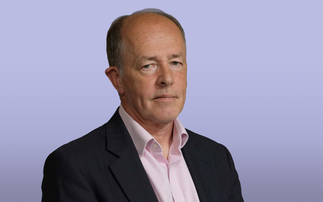Advisers can no longer afford to be locked out of the debate about the benefits offered by trusts, as Phil Carroll demonstrates
During the past 18 months, the trusts market has seen some of the most significant developments of the past 20 years. With legislation constantly changing and a number of high-profile cases, the need to understand what trusts can offer has never been so important. Whether advising in the high-net-worth arena or in the core mortgage protection market, there is a place for trusts to add value to an IFA's business and clients.
Despite the constant changes, it is important to remember that the fundamental benefits of their use have not changed. Holding a protection policy in an appropriate trust will ensure that the benefits are paid to the right people quickly and efficiently and can avoid the payment of unnecessary tax.
How do trusts work?
Trusts do not need to be complicated. In fact, a trust is one of the simplest ways of moving money out of a person's estate and also reducing their Inheritance Tax (IHT) bill. All manner of assets can be written in trusts, including investments, life assurance policies and death benefits. For protection policies in particular, the fact that using trusts can avoid potentially lengthy probate delays is important, allowing the people the settlor (the person who establishes the trust) wants to benefit to do so as quickly as possible.
Trusts work by allowing the settlor to entrust their assets to a group of people - the trustees. The trustees are the legal owners of the assets and manage the assets for the benefit of the beneficiaries - the people who the settlor wishes to benefit from the trust. It is the trustees' responsibility to manage and distribute the trust fund to the beneficiaries.
Often, it is assumed that the only reason to use a trust is to avoid tax. Although this can be a benefit of using a trust, in terms of importance, it is a consideration that sits alongside the aim to provide peace of mind that the structure created will ensure that the wishes of the deceased can be carried out after death.
According to recent Government research of trustees, the main motivation for setting up a trust related to having the ability to control assets, and tax tended to be only a secondary motivating element. Examples of controlling assets included passing them on to children or grandchildren, providing for a beneficiary in a particular way, withholding assets until children reach a certain age and ensuring money stays within the 'bloodline'.
Furthermore, when asked specifically if tax planning was an important factor in setting up a trust, respondents were almost divided equally, with 46% saying it was important and 49% saying it was unimportant.
To understand trusts, it is important to appreciate that transfers out of an estate - including premiums paid into life assurance policies - are considered as either chargeable lifetime transfers or potentially exempt transfers, depending on the type of trust chosen. The tax treatment for each is slightly different.
The Budget on 22 March 2006 and the subsequent Finance Act radically changed the inheritance taxation of trusts. The most significant change was to the treatment of interest in possession and accumulation and maintenance trusts. Previously, gifts to these types of trusts were treated as potentially exempt transfers. However, they are now treated as chargeable lifetime transfers, which are subject to entry, exit and 10-yearly periodic charges. Today, clients can still access the tax benefits of potentially exempt transfers and avoid these charges, but, in order to do so, they have to forgo the flexibility of being able to change the beneficiaries. The gift will also mean that the asset is in the beneficiary's estate for IHT purposes.
Before the Finance Act, most trusts used for protection would have been of an interest in possession trust nature and, therefore, premiums were treated as potentially exempt transfers. But these are now treated as chargeable lifetime transfers for IHT purposes. However, if the protection policies are structured in the right way, the impact of entry, exit and 10-yearly periodic charges in future years can be significantly reduced or even negated.
Although IHT may not be a consideration in recommending the protection policy or the trust, under the current taxation rules, the relevant property regime that applies - and could lead to a policy not held in trust being subject to IHT - has to be considered. If the life assurance policy is not written into the trust, the sum assured will form part of the settlor's estate and the proceeds will be liable to IHT.
By writing a life assurance policy into trust, the proceeds become payable to the trust when the settlor dies and IHT is avoided. As the proceeds fall outside the estate, the trustees have access to them without having to wait for a grant of probate. This can ensure prompt payment to beneficiaries, if the trustees decide this is appropriate. Figures from Her Majesty's Revenue and Customs show that more than 10,000 insurance policies were subject to IHT in 2003/2004. An appropriate trust could have meant the value of these policies would not have been included in the taxable estate.
Types of trusts
There are many types of trusts available. When writing protection policies, the trusts that advisers are most likely to consider are as follows:
n Absolute trusts - also known as bare trusts - are suitable for clients who want to ensure that certain people will benefit from the trust. From the outset, each beneficiary has a precisely defined share of the trust property that the trustees or the settlor can never change. Transfers into absolute trusts are treated as potentially exempt transfers. Depending on the age of the beneficiary, on payment of the sum assured the trustees can either distribute the funds or reinvest the funds for the benefit of the beneficiary (or beneficiaries).
n Discretionary trusts are similar to absolute trusts in so much as the settlor cannot benefit from the trust, but, unlike the absolute trust, it offers huge flexibility to the trustees as to who can benefit from it and when. Unlike the potentially exempt transfer regime, the beneficiaries have no interest in possession and no specific rights over the trust fund. The trustees have complete discretion regarding to whom and when they pay the trust benefits from a wide class of beneficiaries.
Transfers into discretionary trusts are treated as chargeable lifetime transfers and are therefore liable to entry, exit and 10-yearly periodic charges. However, for regular premium policies, the impact of these tax charges is generally minimal as premiums will usually be within the settlor's annual IHT exemption of £3,000 a year.
For policies that combine critical illness (CI) and life cover, a split benefit trust will generally be taxed like a discretionary trust but ensures the CI benefit is held for the benefit of settlor. The settlor has an absolute right to proceeds that arise due to a CI claim (or total permanent disability benefit), but the trustees hold the death benefit for the beneficiaries named in the trust.
On the death of the settlor, any death benefit arising from the trust property is paid outside their estate ensuring that no IHT is payable, although exit charges and periodic charges may apply in the future.
n Business assurance trusts are used when the settlor wishes the other partners or shareholders in a business (the participators) to benefit from a life policy on their life to provide funds for business succession. With this type of trust, when the settlor dies or is diagnosed with a CI covered by the plan, the participators - usually the business partners or shareholders - at that time will have funds to buy their share of the business. If the settlor does not use a trust, the policy proceeds will form part of their estate on death and be liable to IHT. Additionally, the policy will not necessarily be paid to the appropriate people.
The trust can include the settlor if they wish the policy to be able to be assigned back to themselves should they leave the business or retire, subject to the agreement of the existing trustees. However, the introduction of Pre-Owned Assets Tax has added an additional complication that has resulted in many of these trusts excluding the settlor from future benefit.
For advisers working in protection, it is vital to consider whether the use of trusts would be appropriate for each individual client.
Advisers also need to explore in detail what type of trust would be appropriate, depending on the client's circumstances.
For both existing and new business, the changes to the inheritance taxation of trusts have provided both challenges and opportunities. Despite the changes, clear benefits of using trusts still remain and the need for advice in this area is stronger than ever.
Phil Carroll is UK tax and estate planning manager at Skandia











